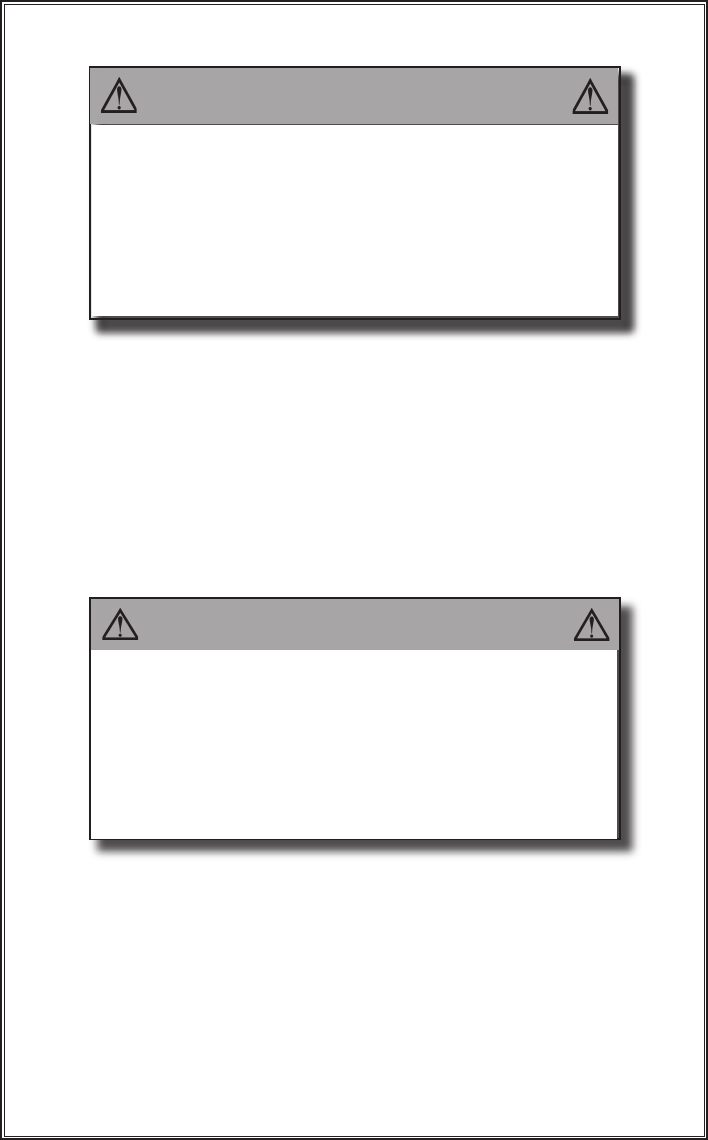
39
kerosene, paint, etc. However, fuel in the tank of an off-road vehicle, or a car or
motorcycle, etc. may be carried on your open trailer.
7.2.1.1 Preparing the Trailer for Loading
Before loading cargo onto the trailer:
• inspect the deck of the trailer for corrosion or damage; and
• inspect the hold down openings and/or “D”-rings. Hold down openings must
be sturdy with no visible cracks or kinks. D-rings must be tight to the deck and
must not be bent.
If the deck or any required hold-down is damaged, do not load the cargo. Bring
the trailer to your dealer or a competent repair service before using it to carry
cargo.
7.2.1.2 Loading the Trailer
Before loading the trailer, couple the trailer to the tow vehicle and ensure the
deck is level. Do not load or unload the trailer when the deck is not level or
when the Trailer is not coupled to the tow vehicle.
1. Ensure the top of the ramp (or ramps) is secure to the trailer, and the bottom
is resting on rm ground. Pockets may be provided to hold the ramp to the
frame of the trailer.
2. Load the cargo onto the trailer.
3. Secure the cargo to the trailer using appropriate straps, chains and tensioning
devices.
WARNING
Do not transport ammable, explosive, poisonous or other
dangerous materials in your trailer. Failure to heed this warning
could result in property damage, serious injury and death.
Exceptions:
• Fuel in the tanks of vehicles that are being towed
• Fuel stored in proper containers used in trailer living quar-
ters for cooking
• Fuel stored in the tank of an on-board generator
WARNING
Damaged or loose “D”-rings can break, allowing cargo to become
loose inside the trailer. Loose cargo can shift the center of gravity,
and result in loss of control of the trailer.
Inspect “D”-rings, and test them for looseness before loading
cargo.
Do not use a damaged or loose “D”-ring to secure cargo.
Failure to head this warning could result in property damage,
serious injury and death.


















